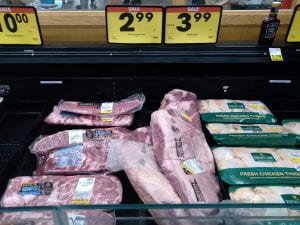By Glynn Tonsor, livestock and meat marketing specialist
 As society continues to transition from the pre-pandemic period and the many shocks that have occurred over the past couple years, it is easy to overlook a simple but critical fact – strong demand for U.S. beef has been supporting cattle prices! Published research points to cow-calf producers in particular accruing proportionally larger economic impacts from beef demand changes.[1] Accordingly, demand strength in recent years has supported feeder cattle prices and growing concerns in mid-2022 around beef demand strength are similarly worth monitoring, Continue reading “Beef Demand Matters!”
As society continues to transition from the pre-pandemic period and the many shocks that have occurred over the past couple years, it is easy to overlook a simple but critical fact – strong demand for U.S. beef has been supporting cattle prices! Published research points to cow-calf producers in particular accruing proportionally larger economic impacts from beef demand changes.[1] Accordingly, demand strength in recent years has supported feeder cattle prices and growing concerns in mid-2022 around beef demand strength are similarly worth monitoring, Continue reading “Beef Demand Matters!”

 Spring born pairs are often vaccinated prior to pasture turnout. One of the important things to do whenever livestock are vaccinated or receive other injectable treatments is to make sure to properly dispose of used needles and surgical blades. Loose needles thrown in the trash present health and safety risks for those in your operation and beyond.
Spring born pairs are often vaccinated prior to pasture turnout. One of the important things to do whenever livestock are vaccinated or receive other injectable treatments is to make sure to properly dispose of used needles and surgical blades. Loose needles thrown in the trash present health and safety risks for those in your operation and beyond.